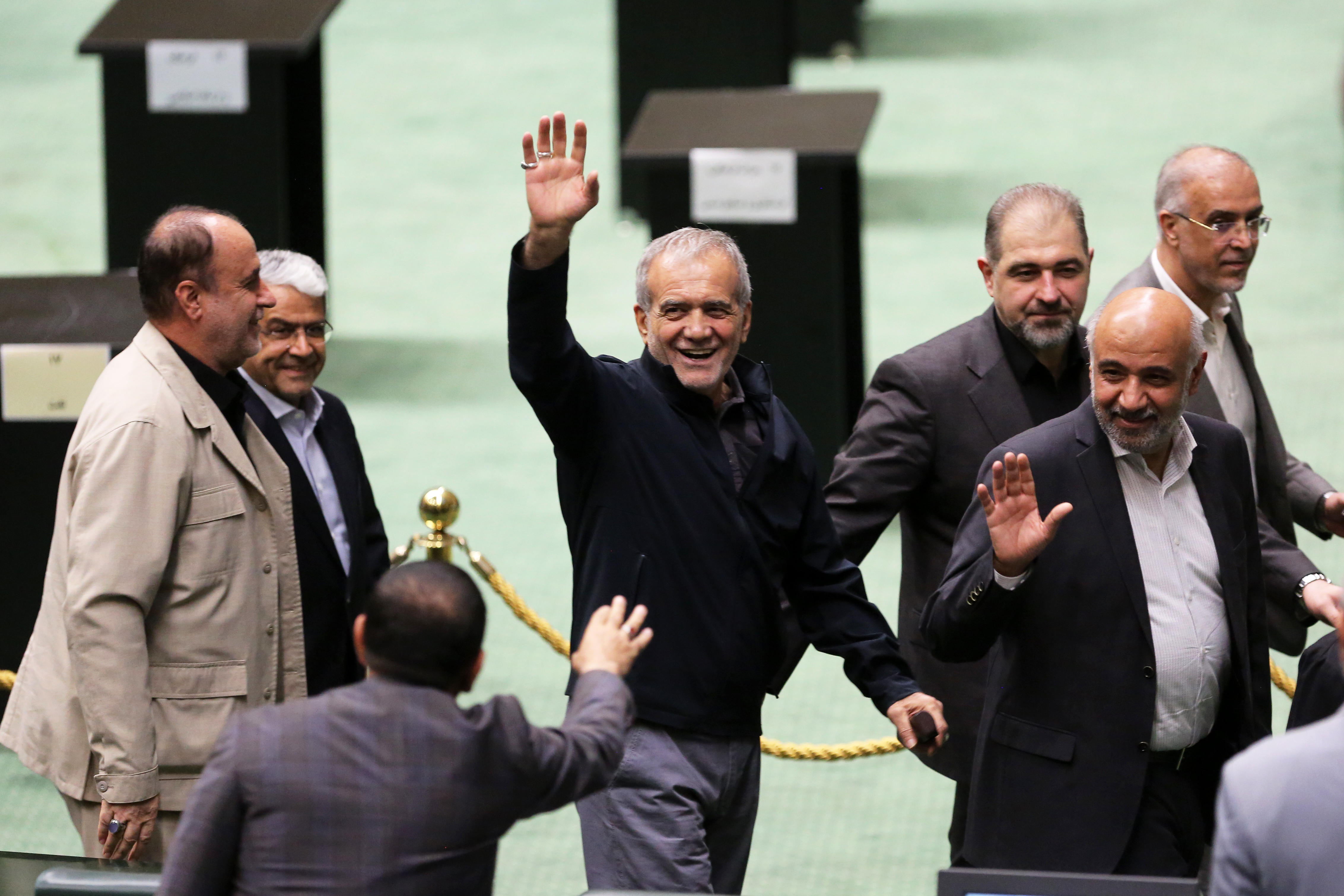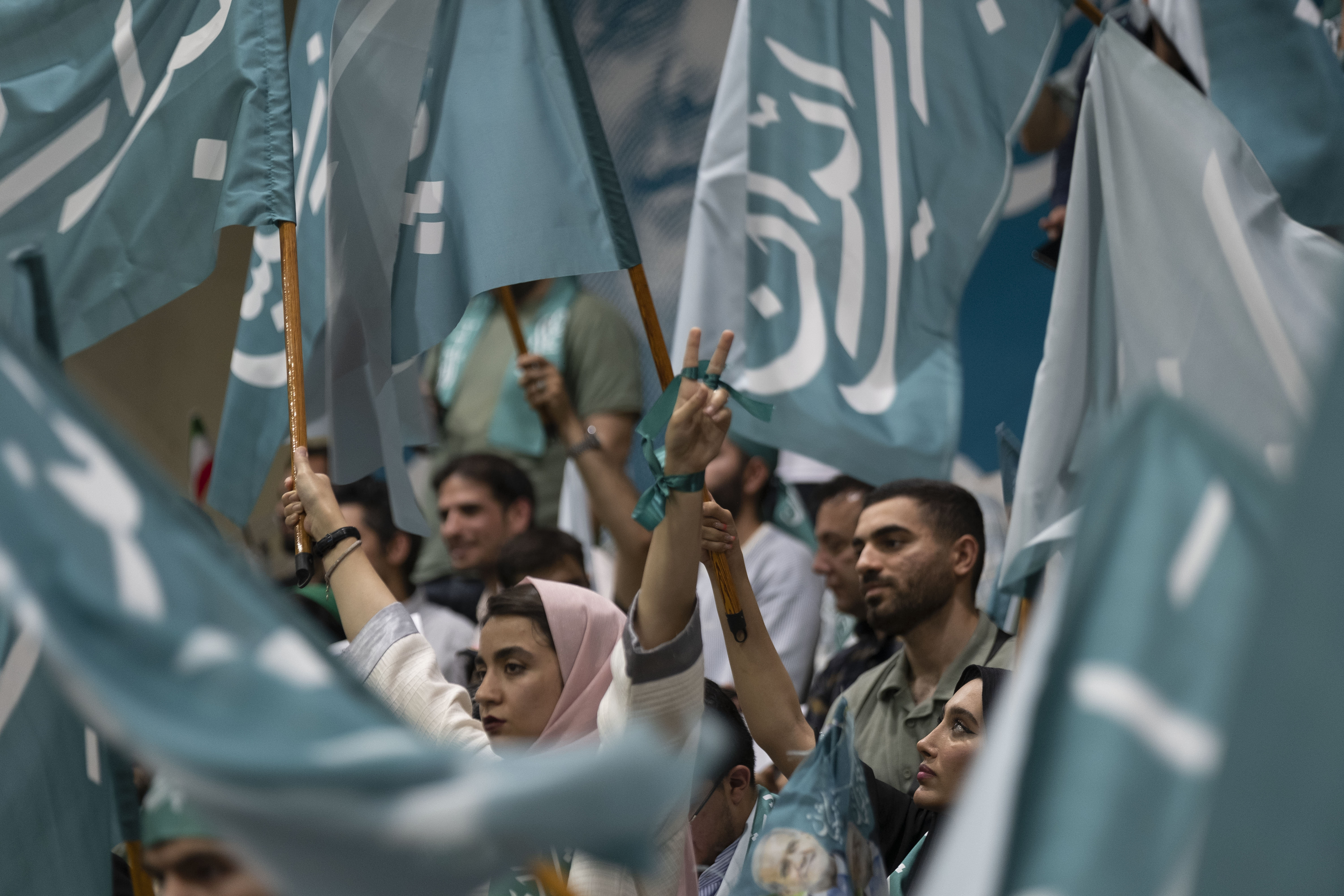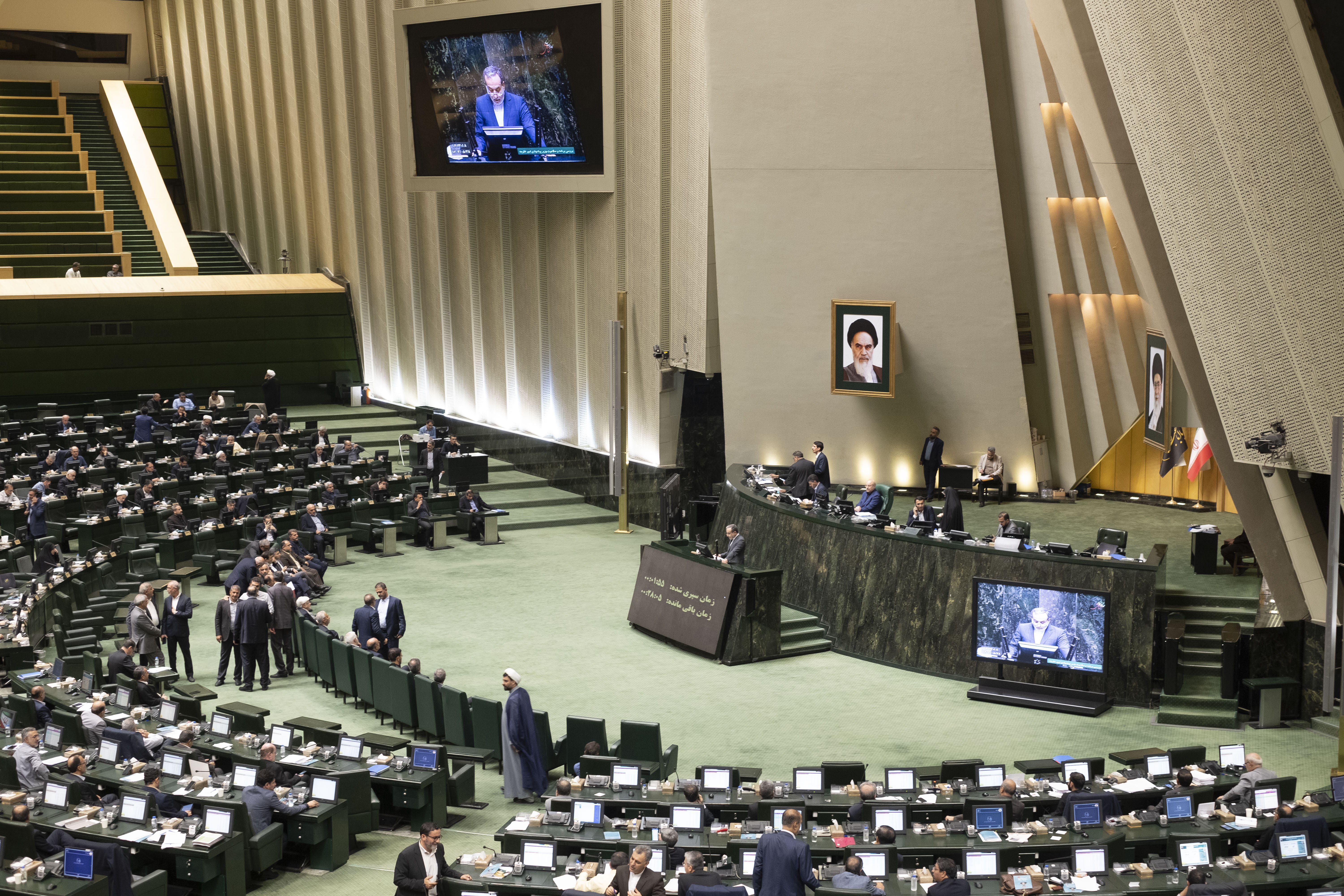Moving forward into the past

Immediately after his election, Masoud Pezeshkian announced unequivocally to anyone who wanted to hear it that he would put together his cabinet exactly according to the will of revolutionary leader Ali Khamenei. Now the new Iranian president has fully honoured his promise.
On Wednesday, the Iranian parliament approved his proposed cabinet on Wednesday. MPs approved all 19 ministerial posts. The list of 19 names that have now been approved is testament to his forgetfulness: Pezeshkian apparently forgot that he had promised something quite different in the short election campaign that preceded the vote in June, which is why he was ultimately elected.
Most Iranians stayed away from the polls in the first round of voting. Arriving with a reputation for trustworthiness and a new political language, Pezeshkian was able to achieve a few percent higher voter turnout. In the end, he was elected with the votes of about a third of the eligible voters. These are all official figures, the truth of which no one can guarantee. But it is at least a small success, which was attributed to his timid criticism of the status quo.
Pezeshkian was very careful to criticise the treatment of women without questioning the compulsory headscarf; he denounced foreign policy and the country's isolation without abandoning his anti-Israeli rhetoric; and he spoke out against rampant corruption without even hinting at its sources. His voters had very modest expectations anyway. They hoped for a little less violence against women, a small improvement in living conditions, and easier access to the Internet. In short, a little more air to breathe. Because no one doubts that Khamenei is the real ruler of the country.

One woman in the cabinet
With his new cabinet, the surgeon Pezeshkian diagnoses not only his own forgetfulness but also the incurability of the entire order. It shows that with Khamenei at the head of this system, an incorrigible, fanatical and stubborn man is enthroned who believes that he is so firmly embedded in his chair that nothing and nobody can move him. Pezeshkian's cabinet proves that Ali Khamenei can do whatever he wants, regardless of the diagnoses or advice of others.
A few hours after the list of ministerial names was published last week, Javad Zarif announced his resignation as vice-president on X. The former foreign minister, who negotiated the nuclear agreement with global powers, had been Pezeshkian's driving force. His supposed role was to consult different circles and groups to make proposals for the cabinet list. Zarif had submitted five names for each ministerial post, including, as promised, women, members of national minorities and, above all, Sunnis, who make up more than a quarter of Iran's population. But hardly any of this came to pass. There is one woman in government, minister for Urban Development Farsaneh Sadegh, a first in the history of the Islamic Republic.
In his proposals, Zarif had also taken into account Khamenei's "sensitivity". It is an unwritten rule that Khamenei himself appoints the key ministries of foreign affairs, interior, intelligence and defence.
Mullahs in key ministries
Pezeshkian's cabinet list apparently consists only of key ministries – Khamenei doesn't miss anything. The list also shows that false hopes were pinned on Pezeshkian. It makes clear that the expectations some had of him were wishful thinking, that this surgeon is first and foremost a deeply religious man whose worldview does not differ much from that of the revolutionary leader. A glance at the names of those he has chosen for the posts of culture, education and higher education suffices. They reveal that Pezeshkian lives and thinks deeply in the past.
During the election campaign, he constantly recited the Koran and repeated religious traditions, even when he had something to criticise. Now his list of ministers shows that he is more a preacher than a politician, more rooted in Shiite scholarship than in the modern education he received at university.
Pezeshkian's three ministers for culture, education and higher education are all mullahs. Although they do not wear turbans, they were educated in Shiite seminaries. They owe their careers in the dark, mafia-like channels of power to their advancement in those seminaries, which are set up exclusively to produce politicised clerics so that they can realise the true Islamic state as state functionaries, whatever the cost.
Why a mullah should determine the country's higher education policy in the future can only be understood when one considers the following: more than 60 per cent of students in Iran are women, and the women's issue has overshadowed the entire politics of this "republic" at least since the beginning of the era of "woman, life, freedom", the slogan of the protests following the death of the student Jina Mahsa Amini in September 2022. Why a mullah should determine future film, theatre and book policy is explained by the various film festivals around the world, where exiled Iranian filmmakers regularly lament their fate in droves. To understand why a mullah should control all of the country's schooling, it is enough to look at the unruly atmosphere in the country's schools.

Limited room for manoeuvre
The new cabinet also shows how limited Khamenei's room for manoeuvre is. Just one example: his new intelligence minister, Ismail Khatib, is the old one. According to the constitution of this "republic", the minister of intelligence must be a senior cleric, a mojtahed – i.e. a "source of imitation". Whether what happens in the torture chambers of the Ministry of Intelligence is worthy of imitation remains to be seen. Khatib wears a turban, but he has spent his entire adult life in the intelligence services. As head of counter-intelligence, he is responsible for perhaps the republic’s greatest ever embarrassment and exposure: the assassination of Hamas leader Ismail Haniyeh in one of Tehran's best-protected neighbourhoods. This unprecedented disgrace has catapulted Iran to the brink of a major war.
But Khatib stays. A few hours after it was announced that he was also on Pezeshkian's cabinet list, he boasted about the many counter-revolutionary plots he has foiled. His new president may have to manage an existential war with Israel. Strange standards in this strange "republic".
© Iran Journal
Ali Sadrzadeh is a long-time Iran expert at the German public broadcaster Hessischer Rundfunk (hr). He has worked for DPA and Frankfurter Rundschau and has been with hr since 1984. Ali Sadrzadeh was public network ARD correspondent in North Africa from 1990 to 1994.